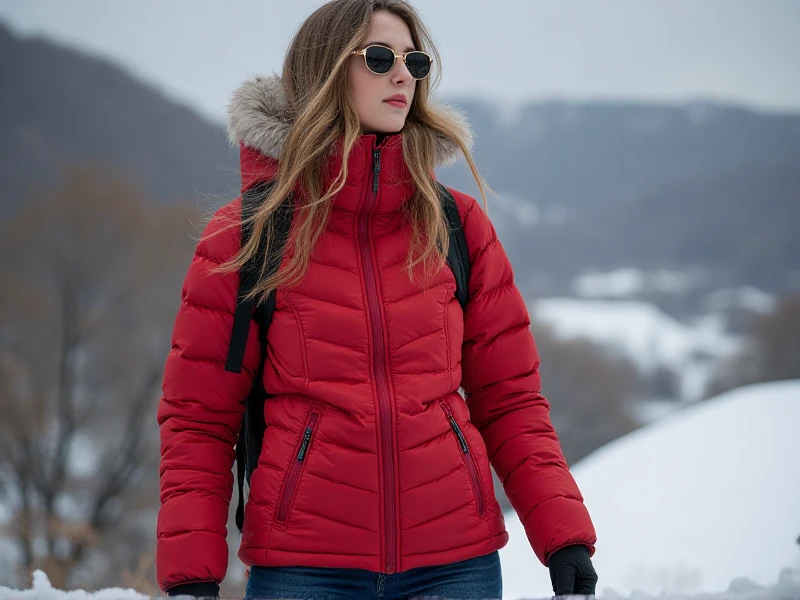
The Ultimate Guide to Men's Outdoor Down Jackets: Warmth, Performance & Style
When cold winds bite and temperatures plummet, a reliable men's outdoor down jacket becomes your essential shield. More than just winter wear, it's the cornerstone of warmth, comfort, and freedom during wilderness adventures, alpine pursuits, or simply navigating the urban chill. Understanding what makes a great down jacket empowers you to conquer the cold with confidence.
Why Go Down?
The answer lies in nature's genius insulation: goose or duck down. These ultra-fine plumules beneath feathers trap air incredibly efficiently, creating a thermal barrier that prevents your body heat from escaping. This translates to unparalleled warmth-to-weight ratio, making down jackets remarkably packable without sacrificing thermal performance – a crucial factor for backpackers and travelers. Modern down jackets effectively balance core warmth without excessive bulk.
Key Features Defining Performance: Not All Down Jackets Are Equal
1. Fill Power: Often ranging from 550 to 900 , this rating indicates the down's lofting ability per ounce. Higher fill power (e.g., 800 ) signifies larger, more resilient down clusters that trap more air. This means:
Greater warmth for the same weight (warmer and lighter).
Superior compressibility (packs smaller).
Generally higher cost.
2. Fill Weight: Simply the amount of down used (measured in grams). A jacket with high fill power but low fill weight will be very light and packable but suitable for milder cold. High fill weight and high fill power = optimal warmth for extreme conditions.
3. Down Type: Premium Goose Down (from larger geese) typically offers higher loft and durability than Duck Down, commanding a higher price. Look for Responsibly Sourced RDS (Responsible Down Standard) certification ensuring ethical animal treatment. Water-Resistant Down (e.g., Nikwax Hydrophobic Down™) treatments are crucial enhancements, helping down retain loft and warmth even when damp.
4. Face Fabric: The lightweight outer nylon or polyester shell protects the down. Key characteristics include:
Durability: Ripstop weaves prevent small tears from spreading.
Water Resistance (DWR - Durable Water Repellent): Causes water to bead up. Needs occasional reactivation. Crucial for shedding light snow and rain.
Wind Resistance: Tightly woven fabrics block chilling winds.
Breathability: Less vital for static insulation but important during higher output activities.
5. Construction: Baffles are the stitched compartments holding the down. Sewn-Through Baffles are lightweight and packable but have slight cold spots at the seams. Box Baffles/Stitchless Construction create three-dimensional chambers, eliminating cold seams and maximizing warmth, but adding slight bulk and weight. Hybrid designs are common.
Down Jacket Types: Choosing Your Cold Weapon
Ultralight Puffers: Minimalist designs, high fill power (700 ), low overall weight. Pack incredibly small. Ideal for backpacking, alpine climbing, and layering under a hardshell. Less weather-resistant face fabrics.
All-Around Insulators: The workhorse. Balance of warmth (550-800 fill power), durability, water resistance, and packability. Perfect for hiking, skiing base layers, travel, and everyday winter use. Often feature water-resistant down.
Expanded Cold-Weather Parkas: Heavier weight, substantial fill, often longer lengths, robust shells, box baffles. Built for extreme cold, ice fishing, expedition use, or simply brutal northern winters. Prioritize maximum warmth over packability.
Choosing Your Perfect Men's Outdoor Down Jacket: Factors to Consider
Intended Use: Backpacking? City commuting? Resort skiing? Extreme cold expeditions? This dictates the necessary warmth, weather resistance, and packability.
Typical Weather: Wet Pacific Northwest? Dry Rocky Mountain cold? Windy plains? Prioritize water-resistant down in damp climates and windproof fabrics in exposed areas.
How You'll Layer: High-output activities demand versatile layering, where an ultralight puffer fits perfectly under a hardshell. For stationary warmth, a thicker parka excels.
Fit: Consider base layers beneath. A trim fit insulates better but restricts layers; a regular fit offers flexibility. Hoods are essential for extreme weather protection.
Features: Look for essentials:
Secure zippers (anti-snag, potentially water-resistant).
Adjustable cuffs and hem to block drafts.
Zippered hand pockets (interior pockets are a bonus for valuables).
Down-lined hoods that cinch down effectively.
Top Brands & Performance Leaders
Trusted outdoor brands consistently deliver quality performance down jackets: Patagonia, The North Face, Arc'teryx, Mountain Hardwear, Rab, Outdoor Research, Marmot, Fjällräven, Mammut. From Patagonia's ethical approach and innovations like Traceable Down to Arc'teryx's technical precision on iconic models like the Cerium SV, choosing a reputable brand often ensures durable fabrics, premium down, sustainable practices, and performance engineering.
Caring for Your Down Investment
Proper care extends life and performance:
Wash Sparingly: Only when obviously dirty or losing loft.
Use Specific Down Wash: Harsh detergents strip natural oils and damage DWR/Treatments (e.g., Nikwax Down Wash Direct®).
Dry Thoroughly: Use low heat with clean tennis balls to break clumps and restore loft completely. Damp down is ineffective!
Store Uncompressed: Hang loosely or use a large storage sack – never store compressed long-term.
Beyond Gear: Embracing Adventure
Ultimately, your men's outdoor down jacket is more than fabric and insulation; it's an enabler. It's the confidence to summit a frosty peak, the comfort to enjoy a crisp winter hike, the reliable warmth watching a sunset over a frozen lake, or the simple joy of walking the city streets without feeling the bite. Choose wisely, care for your gear, and let it empower your winter explorations, wherever they may lead. Explore responsibly, stay warm!
2025-06-06